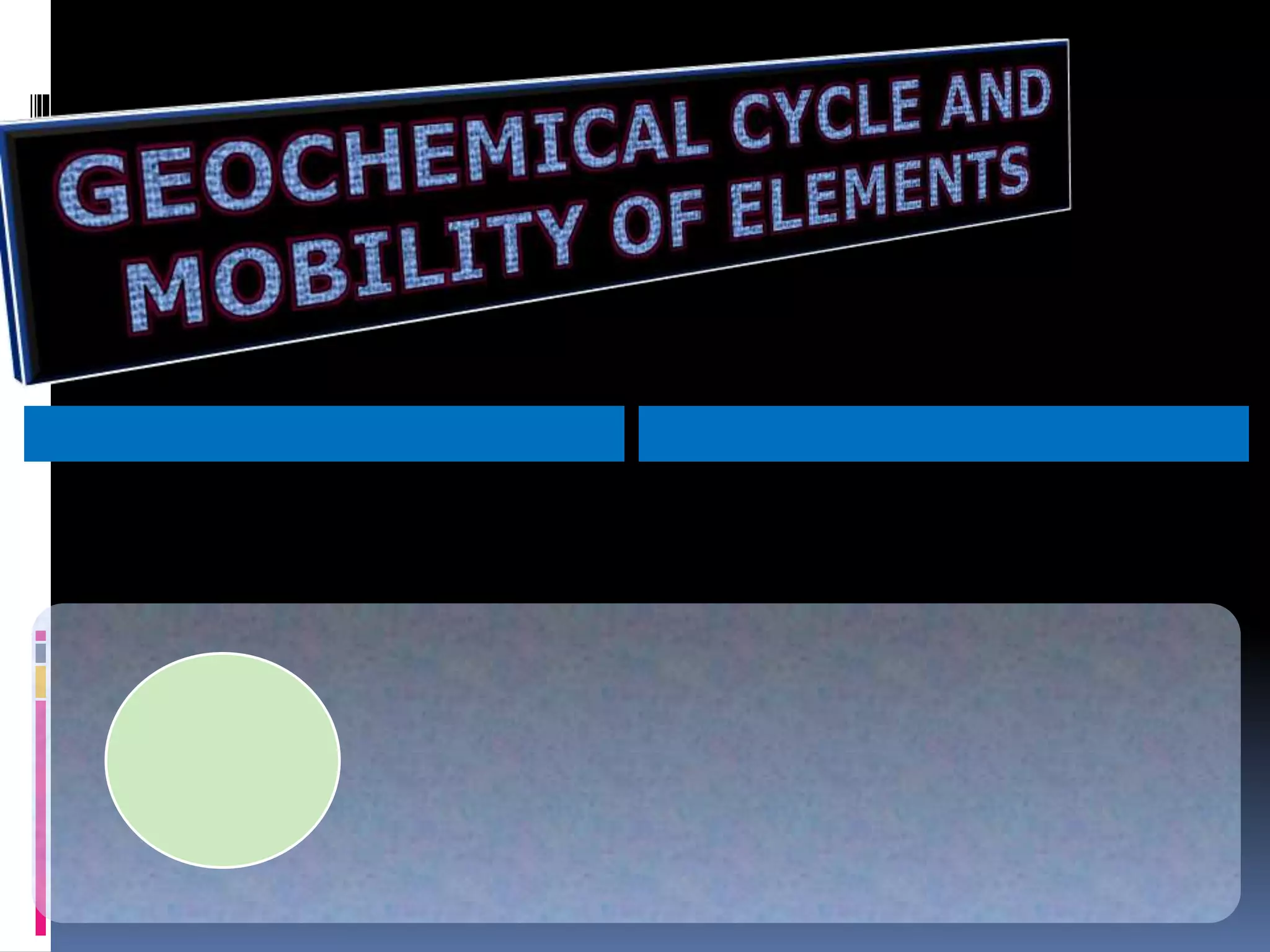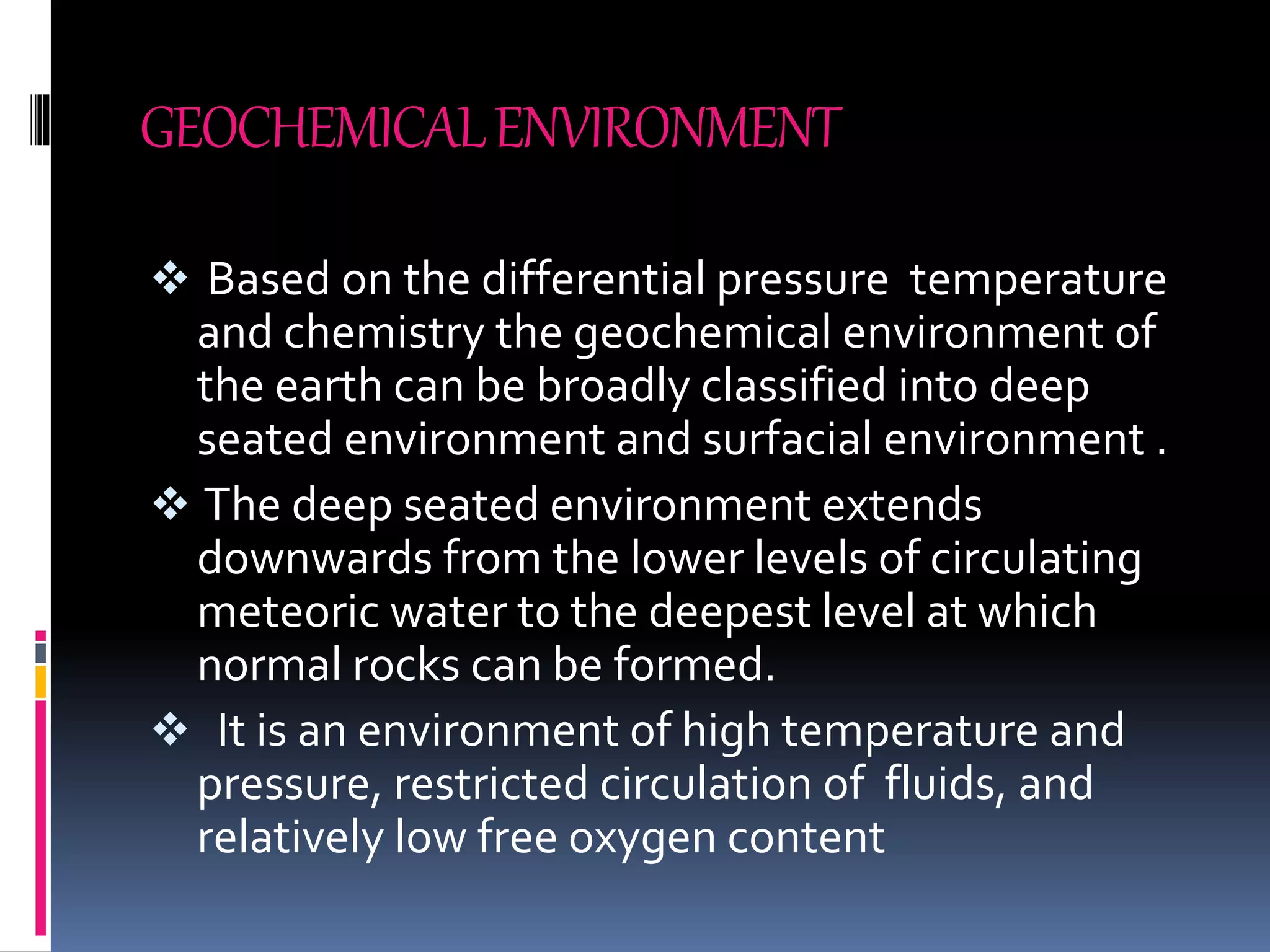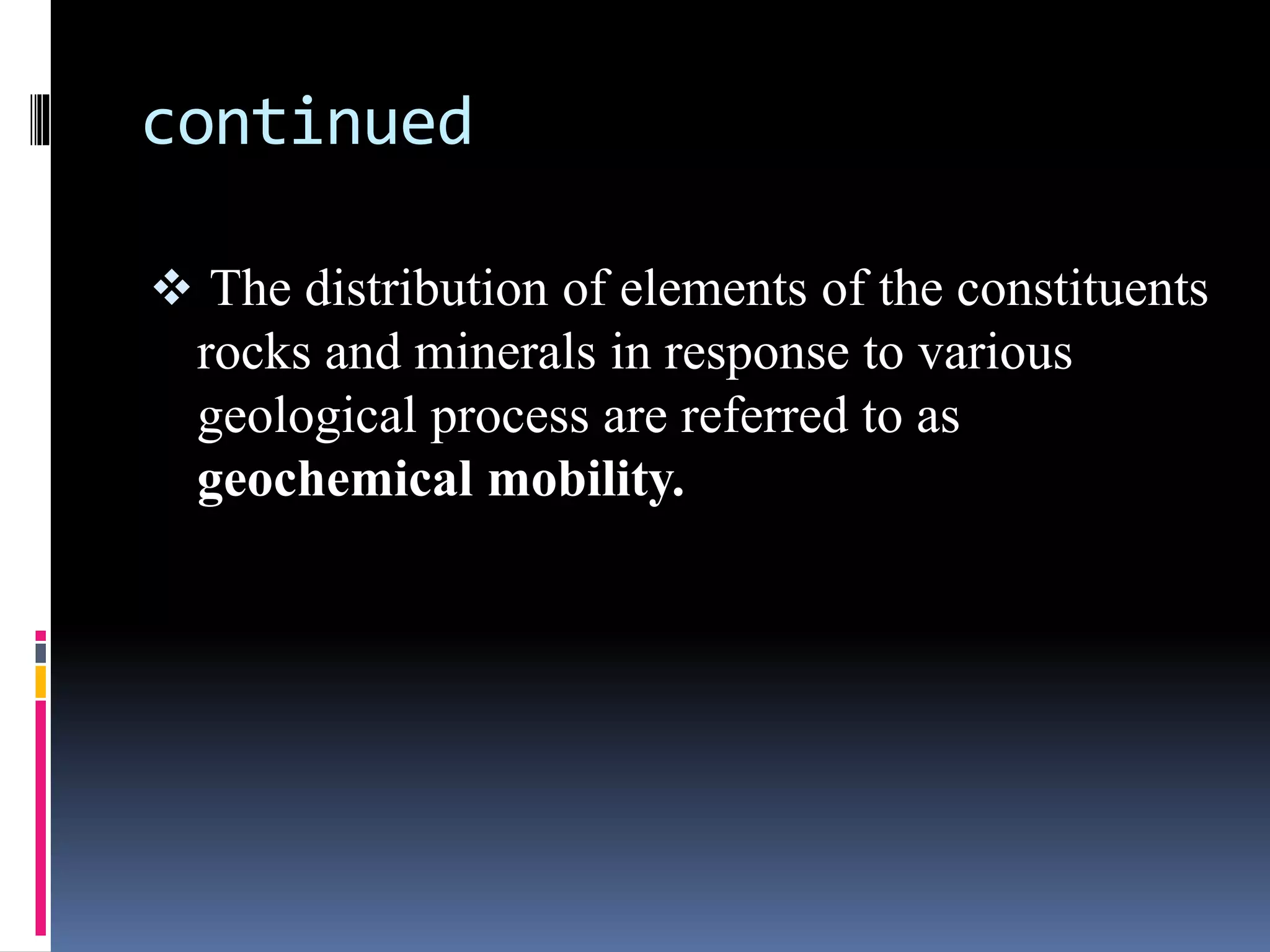The document discusses geochemical concepts relevant to mineral exploration, including the geochemical environment, cycle, dispersion, and mobility of elements. It describes the deep-seated and surfacial environments and how materials move between them in the geochemical cycle. Mobility depends on factors like viscosity and particle size. Hypogene mobility occurs under high pressure-temperature conditions, while supergene mobility is influenced by siliceous or sulfide environments at the surface. Indicator and pathfinder elements are discussed for detecting targeted ore deposits.




















